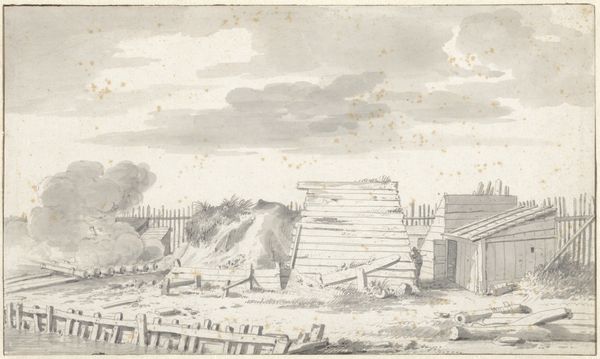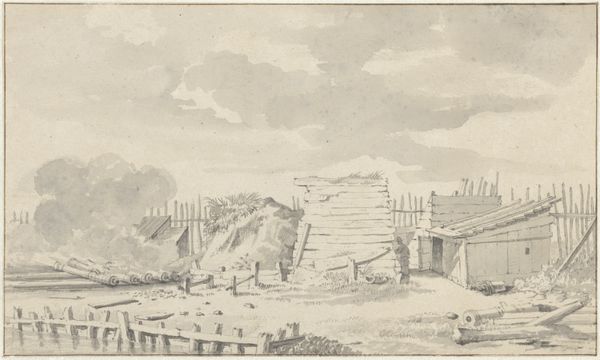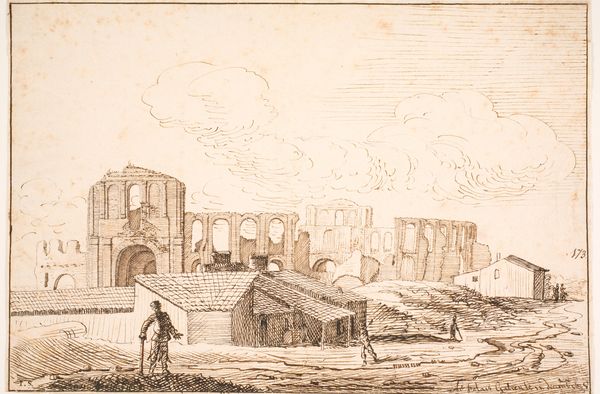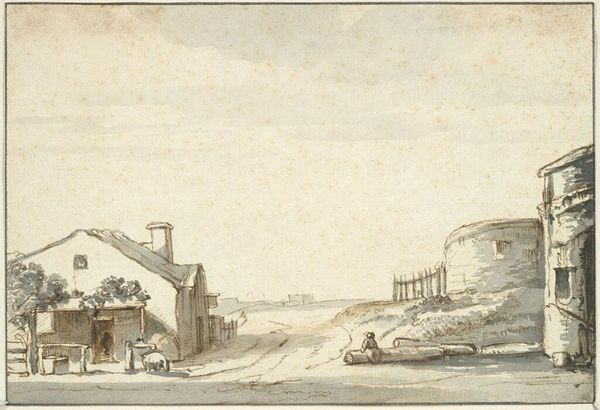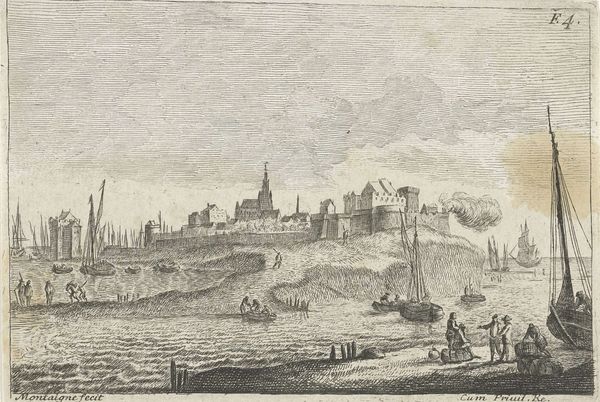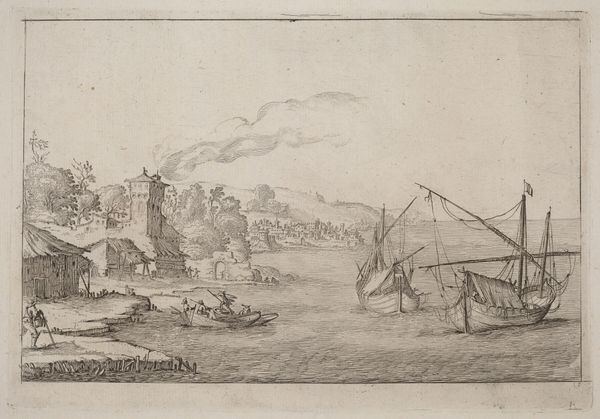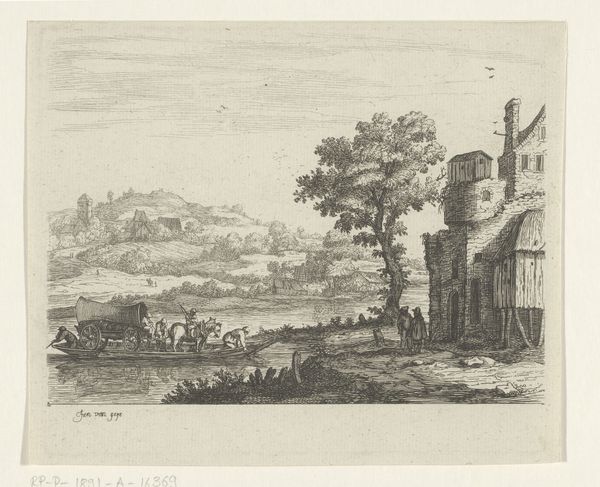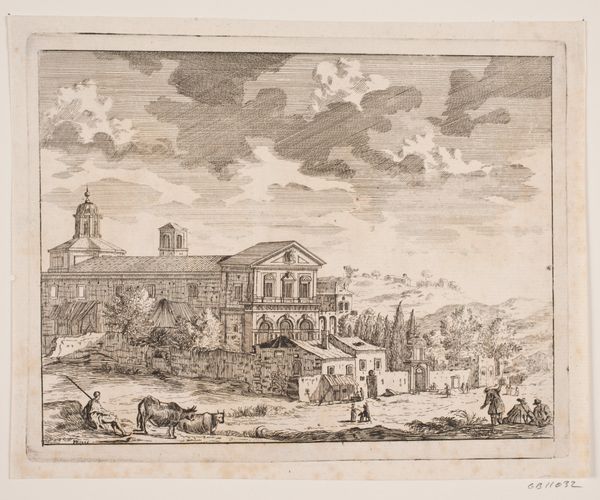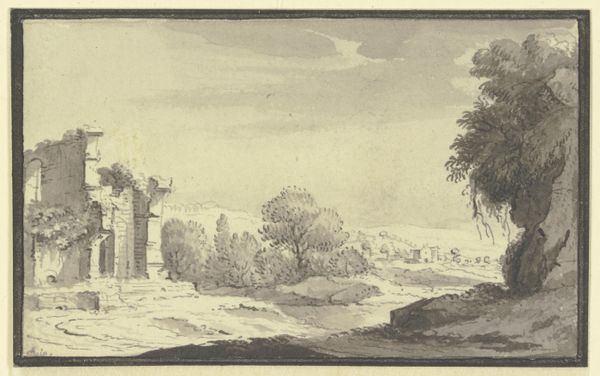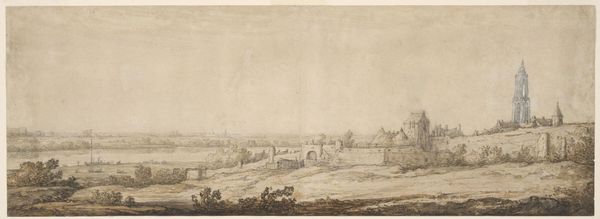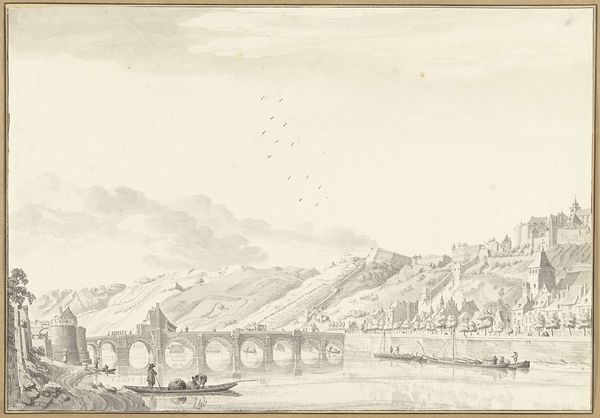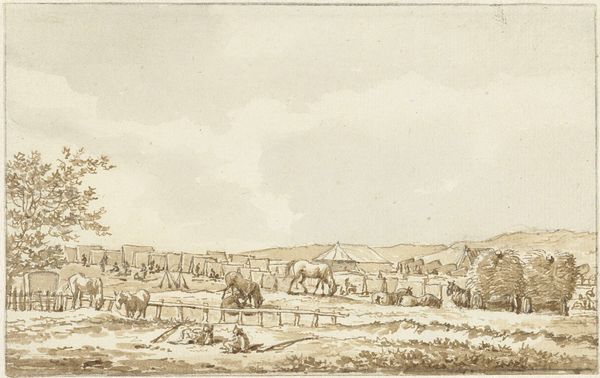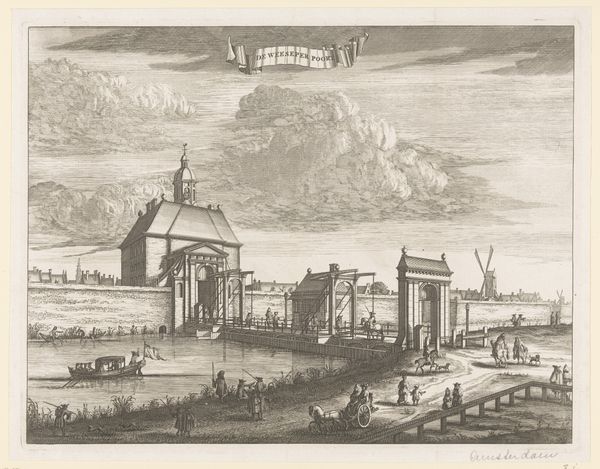
drawing, tempera, ink
#
drawing
#
baroque
#
tempera
#
landscape
#
ink
#
cityscape
#
history-painting
#
realism
Dimensions: height 155 mm, width 240 mm
Copyright: Rijks Museum: Open Domain
Editor: This is Willem Romeyn's "Forum Romanum" from 1660, done in ink and tempera. It's so evocative. The scene feels both grand and desolate at the same time. What symbolic significance do you see within these ruins, considering the artist’s choice of rendering it this way? Curator: The image acts as a memory, doesn't it? Rome, a place so central to Western civilization, is here presented not in glory, but in decay. Consider the symbolic weight of ruins themselves. They're not simply absence, but tangible reminders of past power, of beliefs, of entire worldviews. Do you notice how nature seems to reclaim the space? Editor: Yes, the light seems to highlight the wear, and how everything seems to blend into the landscape... the few figures included almost blend into it. Curator: Exactly! And who populates the forum in Romeyn’s image? Common folk with cattle – not emperors or senators. The contrast is biting. Rome, as a symbol, has transformed. What it represents is no longer about power or empire, but rather about survival and the enduring cycle of time and transformation. Think about how Renaissance artists envisioned Rome versus how the Baroque interprets the city; that gives an even richer symbolism to it. Editor: That’s a really poignant way to view it. So, it's less a portrait of a place and more a meditation on history's layering? Curator: Precisely. Each crumbled column, each shadow, tells a story, a ghost of its former self, transformed. It prompts us to question the nature of legacy and the inevitable ephemerality of even the most imposing symbols of civilization. Editor: I’ll definitely look at Romeyn’s art differently now; there’s so much cultural and emotional depth in what at first appears like just a landscape study. Curator: Indeed, the canvas holds the weight of history.
Comments
No comments
Be the first to comment and join the conversation on the ultimate creative platform.
